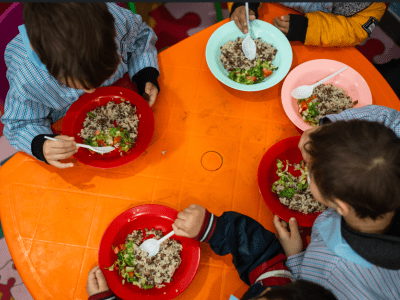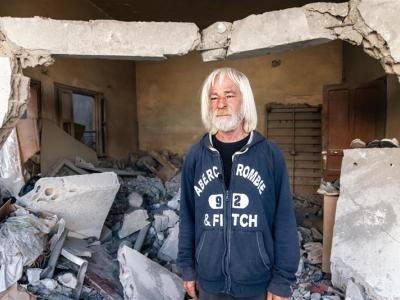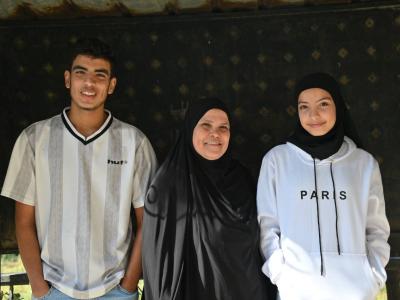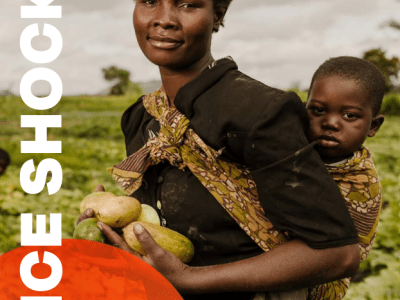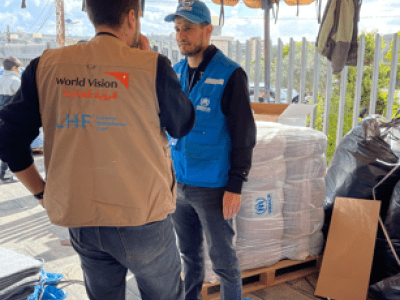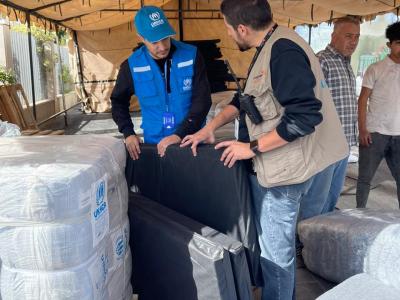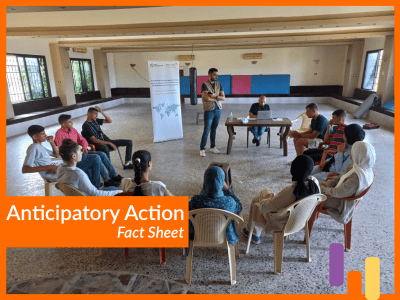publication / March 5, 2025
Middle East Crisis (MEC) Response |LEBANON SITREP #12
Following the second deadline for the cessation of hostilities on 18 February 2025, the country to the south of Lebanon withdrew from population centres in southern Lebanon while maintaining a military presence in five strategic locations along the Blue Line. Despite these developments, military tensions persisted, with reports of demolitions and shelling in border villages before and after the withdrawal, resulting in civilian casualties, raising the total number to 4,200 civilian deaths since the escalation. Meanwhile, protests erupted in Beirut, Bekaa, and Mount Lebanon between 14 and 16 February over internal political disputes, further heightening instability in the country.
Humanitarian conditions remain critical, with 98,994 people still displaced outside their district of origin, while 950,652 have returned home despite extensive damage to infrastructure and limited access to essential services. Entire neighbourhoods, particularly in border villages, have been left in ruins due to sustained bombardments, with water networks, electricity grids, and medical facilities heavily damaged or rendered inoperable. Schools and hospitals have suffered significant destruction, depriving communities of essential healthcare and education services. Additionally, roads and bridges in affected areas remain impassable, further obstructing aid delivery and recovery efforts.
Lebanon is also facing an increasing humanitarian burden due to the arrival of 89,400 people from Syria into Baalbek Governorate, including 20,000 returning Lebanese, further straining already overstretched resources. With fluctuating displacement trends and ongoing security challenges, the country remains in a fragile state, requiring sustained international support to stabilise affected communities, rehabilitate vital infrastructure, and ensure access to essential services for those in need.
publication / January 31, 2025
Lebanon Response Sitrep #11
The agreement on the cessation of hostilities has been extended until February 18. However, in the last week, at least 30 civilian casualties have been recorded. Access to over 70 villages in southern Lebanon remains restricted, preventing people from returning home and posing security risks for displaced populations attempting to rebuild their lives. Humanitarian actors continue to face significant access constraints, making it difficult to provide essential aid to affected communities. While the agreement continues to prevent a return to full-scale conflict, localised violence, military operations and security risks persist.
The humanitarian response remains strained, with significant funding gaps limiting aid distribution, infrastructure repairs and healthcare services. Food insecurity continues to rise, with 1.65 million people facing crisis-level food shortages and 201,000 in emergency conditions (IPC Phase 4). The destruction of agricultural land, market disruptions and logistical challenges are further deepening Lebanon’s economic crisis, affecting both displaced and host communities.
Despite the challenges, humanitarian actors are scaling up response efforts, repairing homes and shelters, providing warm clothes and heat, and restoring essential services. However, with only 58% of the 2024 Flash Appeal met, a sharp increase in funding is needed to meet growing humanitarian demands. Sustained diplomatic efforts and international support will be essential in preventing further deterioration and ensuring a comprehensive path toward recovery and peace in Lebanon.
article / February 4, 2025
Will Hope Find a Way through Lebanon’s Crises?
In Lebanon, children face multiple crises, including disrupted education and displacement. World Vision Lebanon, funded by Hong Kong, supports Lebanese residents and Syrian refugees in Mhammara through psychosocial support, vocational training, and cash assistance. This project aims to improve mental health, social interactions, and livelihoods for families and children affected by ongoing crises.
publication / January 10, 2025
Middle East Crisis (MEC) Response |LEBANON SITREP #10
Lebanon is grappling with a severe humanitarian crisis following 14 months of escalating violence. Over 4,000 people have been killed, including 290 children and 790 women, while nearly 1.2 million people have been displaced. Despite a 60-day cessation of hostilities, fragile security conditions prevent over 160,900 people from returning home. Many remain in temporary shelters, facing destroyed infrastructure and limited access to basic services. Nearly 100,000 homes have been fully or severely damaged, rendering thousands homeless and exacerbating vulnerabilities among at-risk populations.
publication / March 18, 2025
Price Shocks 2025: High Prices Lead to Hunger Pandemic
World Vision report that looks at how long it takes for families around the world to be able to afford basic food supplies.
publication / May 5, 2025
N4G Summit 2025 Outcomes Report
World Vision’s impactful engagement at the 2025 N4G Summit drove nutrition commitments, child participation, and global advocacy for malnutrition solutions.
publication / December 6, 2024
Middle East Crisis (MEC) Response |LEBANON SITREP #8
After over two months of intense conflict and nearly a year of escalating hostilities, a ceasefire came into effect on 27 November at 04:00 local time, marking a pivotal moment for Lebanon. The agreement is rooted in implementing UN Resolution 1701 (2006), establishing a 60-day timeline for withdrawing forces from southern Lebanon and deploying Lebanese Armed Forces (LAF) along the border.
In the hours preceding the ceasefire, 26 November witnessed devastating airstrikes by the country to the south of Lebanon, causing significant destruction across multiple areas. Beirut was heavily impacted, particularly its central district and southern suburbs, leading to widespread panic. The Bekaa Valley suffered similar devastation, while Saida and the Rashidieh Palestinian refugee camp were targeted for the first time since October. Additionally, airstrikes severed the Aridah crossing between northern Lebanon and Syria, further isolating the country.
Since the ceasefire, many displaced families have begun returning to their communities. However, these returns are fraught with challenges, as many encounter destroyed homes, damaged infrastructure, and limited access to basic services. Others remain unable to return due to safety concerns and access restrictions, particularly in southern Lebanon.
publication / December 6, 2024
Middle East Crisis (MEC) Response |LEBANON SITREP #8
After over two months of intense conflict and nearly a year of escalating hostilities, a ceasefire came into effect on 27 November at 04:00 local time, marking a pivotal moment for Lebanon. The agreement is rooted in implementing UN Resolution 1701 (2006), establishing a 60-day timeline for withdrawing forces from southern Lebanon and deploying Lebanese Armed Forces (LAF) along the border.
In the hours preceding the ceasefire, 26 November witnessed devastating airstrikes by the country to the south of Lebanon, causing significant destruction across multiple areas. Beirut was heavily impacted, particularly its central district and southern suburbs, leading to widespread panic. The Bekaa Valley suffered similar devastation, while Saida and the Rashidieh Palestinian refugee camp were targeted for the first time since October. Additionally, airstrikes severed the Aridah crossing between northern Lebanon and Syria, further isolating the country.
Since the ceasefire, many displaced families have begun returning to their communities. However, these returns are fraught with challenges, as many encounter destroyed homes, damaged infrastructure, and limited access to basic services. Others remain unable to return due to safety concerns and access restrictions, particularly in southern Lebanon.
publication / November 21, 2024
Anticipatory Action Fact Sheet - Lebanon
Discover how anticipatory action initiatives in Lebanon are building resilience and reducing disaster risks through innovative projects and community-focused solutions.
